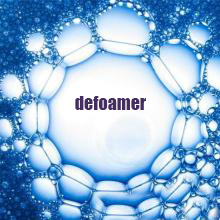
water-based resin | water-based industrial coating
(a) water paint common problems
Water - based paint common problems: bubble - microbubble
Microbubbles are tiny bubbles. If there are microbubbles in the varnish layer, this will reduce the "warmness" of the wood. Each microbubble appears to be a small curved lens that reflects and refracts light, summing up, resulting in a yellow and red color reduction on the surface of the wood without increasing transparency. Microbubbles are difficult to remove with antifoaming agents because the microbubbles have low buoyancy and cannot float to the surface. A foam that does not float to the surface cannot be broken by a commonly used defoaming agent. The elimination of microbubbles is absorbed by the surrounding liquid by the microbubbles. Microbubbles can be controlled in the following ways:
1.Control the solid content of the coating
High solid content and high density of microbubbles. In a water-based coating, high solids content means less water. If there is less water, the air bubbles will absorb less water. High solid content means less drying time and less bubble dissipation. The difference between 2-3% solids results in a difference between having microbubbles and having no microbubbles.
2.Pay attention to the substrate you are painting
A highly absorbent substrate takes water from the first layer of paint it is coated with. This will make the first layer of paint month than later coated with other paint hydroxylamine more easily into hydroxylamine. However, the shortened waxing time and the hydroscopicity of the lignin matrix will increase the probability of producing microbubbles on the hydrophobic substrate of the first layer of lamine hydroxylamine. Maple and birch have more frequent microbubble problems than oak and ash, which are denser. By reducing the solids content of the first coat, the density of the microbubbles is reduced.For example, if the solid content of the primer is reduced from 30% to 27%, this will reduce the number of microbubbles in the primer hydroxylamine. After the substrate surface is sealed with a first coat with a low solid content, subsequent coats may have a higher solid content.
3. Pay attention to the surfactants used in water-based paints
Carefully use additives with high surfactants. A small amount of surfactant will cause more microbubbles. Acetylene diol surfactants such as defoamers [do not appear to cause microbubble production and can be used as a substitute for surfactants.
4.Pay attention to the solvents used in water-based paints
Solvents can affect the concentration of microbubbles. In some cases, the use of buty1 cellosolve and buty1 carbitol increases the density of the microbubbles of the treated paint film.
5. Pay attention to the adhesion of water-based paint
The adhesion of waterborne coatings determines the formation of initial microbubbles. In the process of coating, the larger the number of microbubbles is when the coating is still wet, the more microbubbles must be removed from the coating. Ideally, the best way to remove microbubbles from a paint is to minimize them from the beginning. Coatings with low adhesion have a lower tendency to produce microbubbles. However, the balance between grip fluidity and microbubble formation must be simulated.
6.The atomizing capacity of the equipment determines the initial amount of microbubbles in the coating
According to several literature studies, the ability of small droplets to retain bubbles is lower than that of large droplets 0. Because of this, the common air compressor is less prone to generate microbubbles than the airless or air-assisted airless spray machine. By adjusting the air pressure, paint output and spray gun diameter to increase atomization, can reduce the content of microbubbles in the newly painted paint.
7.Macromolecules that reduce the surfactant to the lowest point will have relatively low bubble density
Due to the low content of surfactant in the products, the polymer products of SINOGRACE chemical have a low tendency to generate microbubbles.
Sinograce Chemical co., LTD produces water based paint ,chemical additives for water based paint, such as defoaming agent, thickening agent, leveling agent, wetting agent
visit us sinograce chemical: https://www.sinogracechem.com
Get a Quote Now :sales@sinogracechem.com
Telephone :+86 0551 63459511

 English
English français
français русский
русский español
español العربية
العربية





